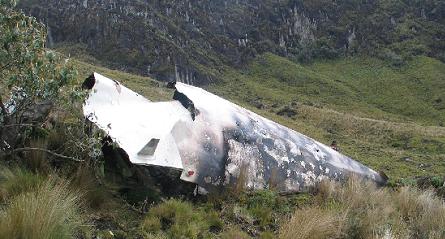Poor airmanship from pilots of a Conviasa Boeing 737-200, including a failure to respond to a ground-proximity warning, resulted in the jet's crashing on the slopes of an Ecuadorian volcano two years ago.
Investigators found that the crew, inbound from Maiquetia in Venezuela, had been expecting a straight-in approach, from the north, to Latacunga Airport's runway 18.
But air traffic control instead instructed a different standard procedure, requiring the aircraft to overfly the VOR south of the airport, make a 180° right turn, then head north and descend to 13,000ft until intercepting the VOR's 340 radial.
From this point the procedure required another 180° right turn and descent onto the final approach path.
Ecuadorian investigators have determined that the aircraft correctly overflew the VOR at 15,000ft. But as it made the initial 180° turn to the north, the aircraft did not follow the published arc. It flew a wider turn and ended up 7nm west of the VOR instead of 4nm.
In its final report, the inquiry board says the pilots had failed to carry out the turn at the correct speed, configuration and bank angle. The crew "did not notice" that the poorly-conducted turn put the aircraft "outside the protected airspace", it adds, in a region surrounded by high terrain.
The extra displacement to the west meant that the aircraft travelled much further along the northbound leg than it should have before encountering the VOR radial. The extended flight path, some 16nm instead of the normal 9nm, took the aircraft into a mountainous region.
 |
|---|
Source: Junta Investigadora de Accidentes |
Flying in darkness, the crew informed air traffic control that they were beginning the second 180° right turn which would normally have brought the 737 onto the runway heading. The aircraft instead collided with the Illiniza Sur volcano while in a 25° right bank, on a heading of 28°, at an elevation of 13,100ft.
The twin-jet disintegrated, leaving a 180m (590ft) debris trail. All three occupants on the ferry flight - both pilots and an engineer - were killed. The captain had over 9,000 flying hours including more than 5,900 on 737s.
Information from the aircraft's flight recorders show that a ground-proximity warning sounded 22 seconds before the impact but the crew "did not execute an evasive manoeuvre", says the inquiry board. Weather, it adds, was not a factor in the 30 August 2008 accident.
Source: Air Transport Intelligence news



















